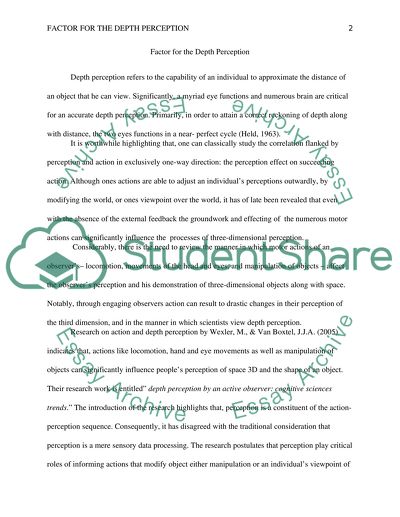Cite this document
(“Factor for the Depth Perception Essay Example | Topics and Well Written Essays - 1500 words”, n.d.)
Retrieved from https://studentshare.org/psychology/1473557-factor-for-the-depth-perception
Retrieved from https://studentshare.org/psychology/1473557-factor-for-the-depth-perception
(Factor for the Depth Perception Essay Example | Topics and Well Written Essays - 1500 Words)
https://studentshare.org/psychology/1473557-factor-for-the-depth-perception.
https://studentshare.org/psychology/1473557-factor-for-the-depth-perception.
“Factor for the Depth Perception Essay Example | Topics and Well Written Essays - 1500 Words”, n.d. https://studentshare.org/psychology/1473557-factor-for-the-depth-perception.


